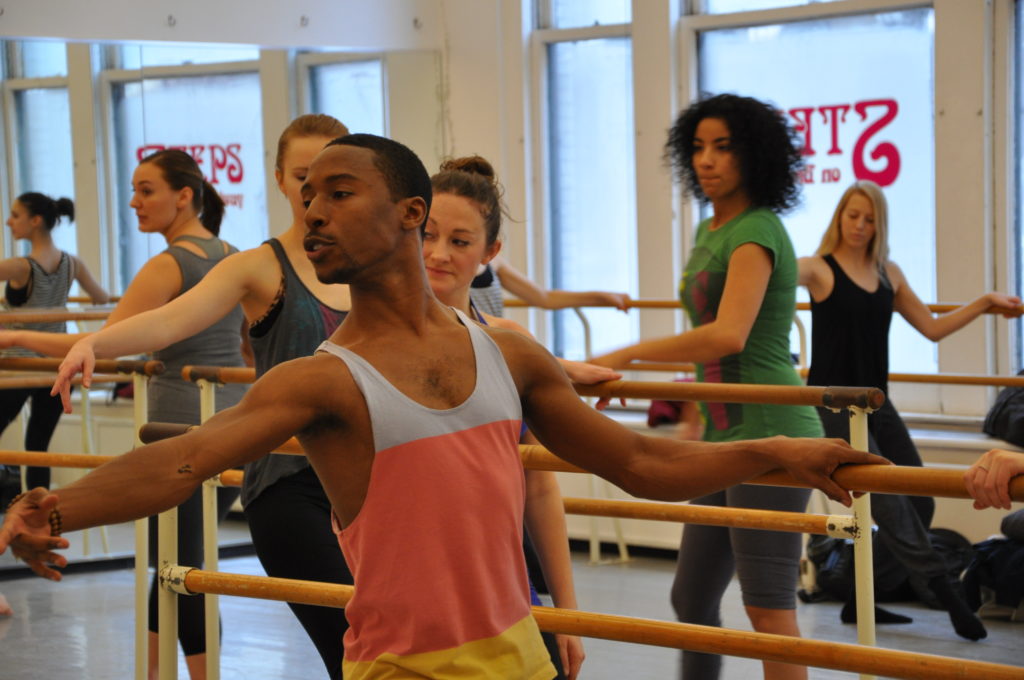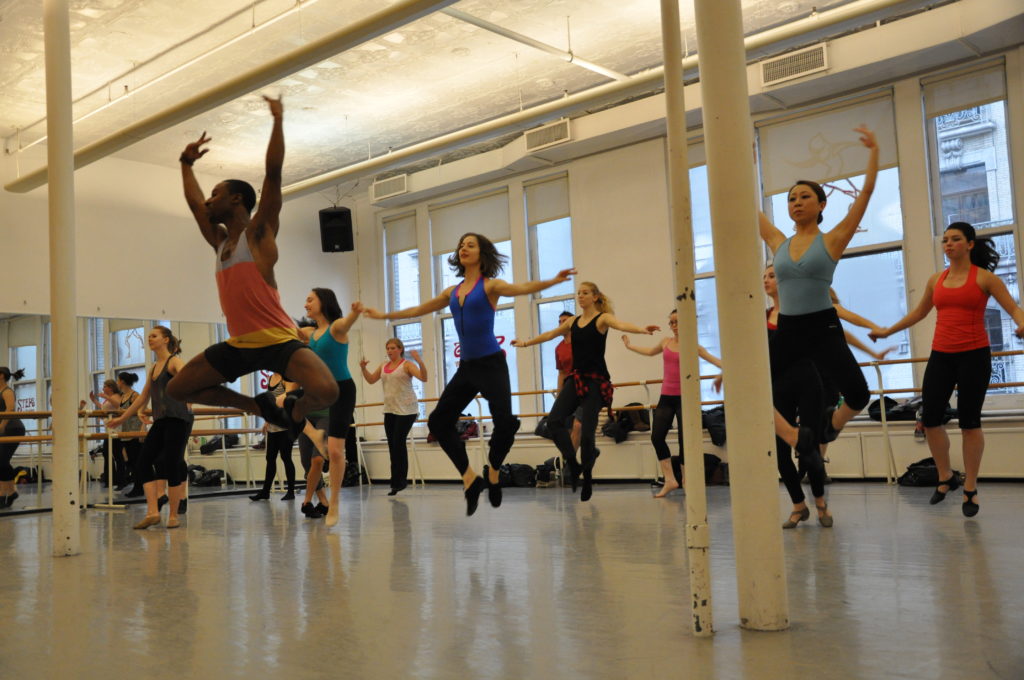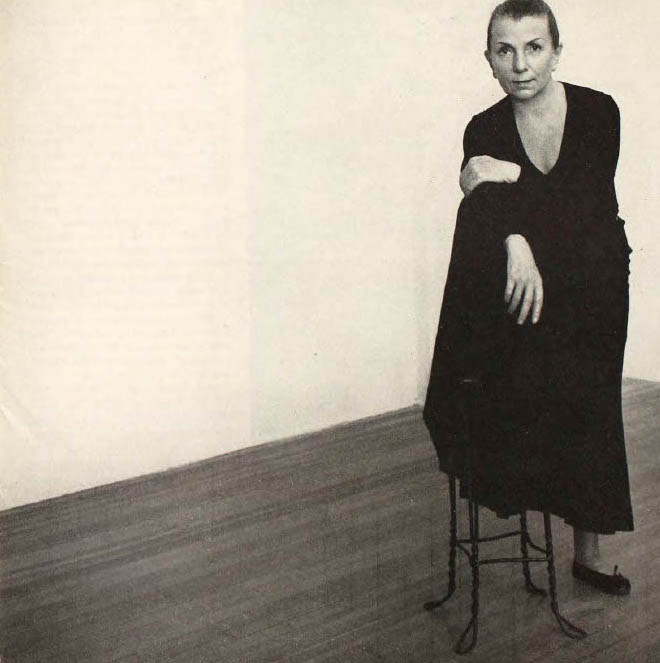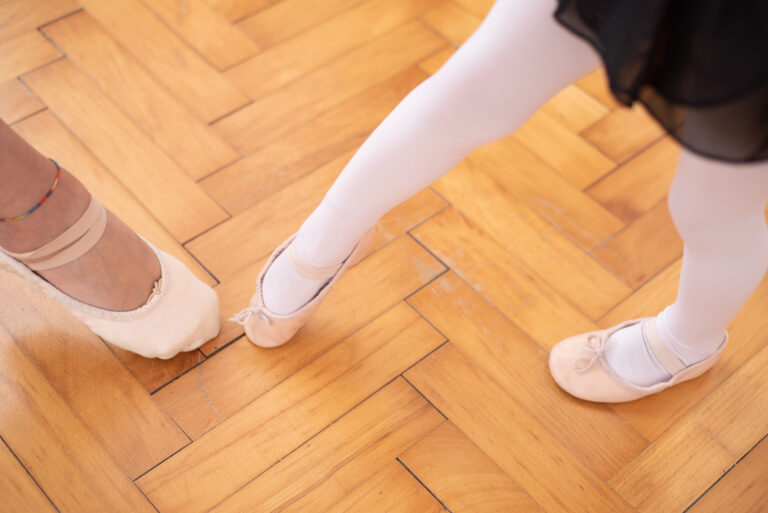
Christopher Liddell first realized how important it is to talk in dance class when he was a young student himself. As the South Florida–based ballet, jazz and tap teacher says, “I remember thinking, ‘Pliés at the barre feel great, but why are we doing them?’ I needed to develop a sense of thinking about dance that you don’t get through your body alone.”
That’s why these days, Liddell prioritizes verbal participation and feedback from students. “When dancers ask questions and think through the information you’re giving them out loud, dance is no longer just something you’re telling them to do.”
But as any dance teacher knows, some students need no encouragement before chatting away, while others are reluctant to even say their own names. To help find the right balance, Dance Teacher asked Ashley Gayle (Bay Area–based hip-hop, jazz and modern teacher), Avital Asuleen (New York City–based musical-theater and tap teacher) and Liddell for all their best “talking points.”

Set the Tone and the Time
Gayle has found that establishing clear boundaries around when and how to talk in class works best when done in advance. “At the very start of the year, we go over expectations about behavior within the structure of the class,” she says. “I even remind them at the start of every class as we go on. It’s less ‘Don’t talk while the teacher’s talking’ and more ‘Let’s respect each other by having one mic.’”

In Gayle’s ideal scenario, about 30 percent of class time goes to some form of verbal engagement. “I dedicate five to 10 minutes at the start of any class to check in, set the tone, and see if there’s anything they need to communicate to me.” When time allows, Gayle also likes to close with discussion. Try asking students, “How was class today? What moments did you appreciate? What can we improve upon next time?” Mid-class check-ins can also be helpful if you’re sensing that the room’s energy is off, or if something unexpected disrupts instructional flow.
Get Better Questions
Who among us hasn’t asked the class if there are any questions, only to be met with blank stares? “Make sure it’s not scary or intimidating to ask questions,” Asuleen says. “Go back and look at your relationships with individual students. Try to ensure that your classroom feels inclusive and welcoming.” Do you respond to dancer questions with enthusiasm or impatience? (“Thank you for being brave enough to ask, because you’re probably not the only one confused. Let’s break it down” versus “We went over this already. You should have it by now.”)
Beyond striving for a question-friendly environment, Asuleen recommends meeting dancers halfway by gently suggesting areas where you suspect they might be confused. In other words, “Make the call for questions specific.” Try, “Does anybody need me to go over this weight transfer?” “Do you have any questions about how we get from this step to that step?” “I noticed that a lot of us have the wrong arm up after the turn. Should we go over that?”

Silence Isn’t Golden
It’s long been a part of dance-studio culture: The teacher or choreographer at the front of the room speaks freely and often, while the dancers remain largely silent. That’s why it’s important to let every student know that what they need to say does matter to you as their teacher.
“When I give dancers time to talk, I make sure I have enough time to get an answer from everybody,” Liddell says. “I also make sure everybody knows to have an answer prepared.” Having time to plan a response in advance can be reassuring to shy or quiet dancers, who might feel put on the spot by in-class discussion.
Asuleen says it’s also essential to think about the different reasons why dancers aren’t expressing themselves verbally. “Some students are quiet and disengaged,” she says. “I’ll try to pull them out of their daydreaming with ‘What do you think, So-and-So?’” That’s in contrast to those who feel anxious about speaking in front of others. Such dancers might benefit from other ways of sharing with the group, like an improv circle or a silent poll using raised hands. Still others learn best by processing information internally, and so “don’t need to verbally ask questions to have a full learning experience,” Asuleen says.

Dancers Who Won’t Stop Talking
As a former quiet kid herself, Gayle at first had a hard time identifying with dancers who had plenty to say. Everything changed, she says, when she started seeing talkativeness as overflowing enthusiasm about dance: “It’s beautiful that they want to talk about every single thing we’re doing in class.” Gayle now makes herself available before and after class for students who want to continue the conversation.
But at times when class or rehearsal must go on, it’s best to help those particularly opinionated or inquisitive students see the impact of their choices. Let dancers in on the fact that good classroom etiquette is what allows instruction to move forward. As Asuleen says, “It’s one thing to raise your hand and ask a question, another to speak out of turn in an instructional moment, and another to just start talking in the middle of the combination.” Make sure dancers understand the differences between these different kinds of talking in class—not to mention the importance of active listening. As Gayle notes, it can sometimes be as simple as saying, “‘Susie, you’ve shared a lot today. Let’s leave some space for another friend to speak up.’”
“I’m straight up with my kids, of all ages,” says Liddell. “They love it when you get straight to the point in telling them, ‘It’s so great that we’re coming together for dance class and sharing, but we only have so much time.’” Bonus: You’ll be teaching them a valuable lesson about time management and prioritization.



